Explore Aswan - Egypt Travel, Africa
Aswan, located along the majestic Nile River in Upper Egypt, is a captivating destination brimming with rich history and vibrant culture. This serene city, known for its scenic beauty and peaceful atmosphere, is a gateway to the Nubian world and ancient Egypt. With its iconic landmarks, warm hospitality, and unique experiences, Aswan promises an unforgettable journey for those seeking both relaxation and adventure. Whether you're exploring ancient temples or cruising the Nile on a traditional felucca, Aswan offers a perfect blend of history, nature, and culture.
Population: Approximately 380,000 in 2021.
Economy: Aswan's economy majors in tourism, agriculture, and trade. The city attracts visitors with its historic sites and natural beauty, while agriculture supports local livelihoods, particularly in the Nile Valley.
Landmarks: Famous for the Philae Temple, Abu Simbel, and the Unfinished Obelisk.
Egypt
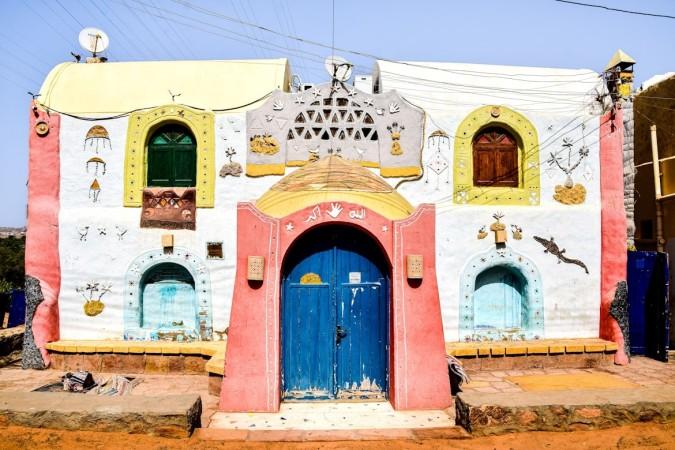
Overview of Aswan
History & Cultural Influence
Aswan's history stretches back thousands of years, making it a key location in the story of ancient Egypt. The city was once a bustling trade center, linking Egypt to Nubia and the rest of Africa. Today, Aswan stands as a living testament to this rich past, with monuments from various periods still standing tall. Beyond the Pharaonic period, Aswan has been influenced by Roman and Islamic cultures, contributing to its diverse heritage. Walking through the city, you’ll feel the presence of these layers of history, with Nubian traditions adding an even deeper richness to Aswan’s cultural landscape.
Interaction with the Locals
Aswan has a significant portion belonging to the Nubian community, an ethnic group with deep historical roots in the region. The citizens of Aswan are known for their warmth and hospitality, welcoming visitors with open arms. The Nubian culture, known for its colorful traditions, music, and cuisine, plays a vital role in the city's identity. While Arabic is the official language, many locals speak Nubian dialects, and English is commonly spoken in tourist areas. The community’s connection to the Nile shapes their daily life and traditions.
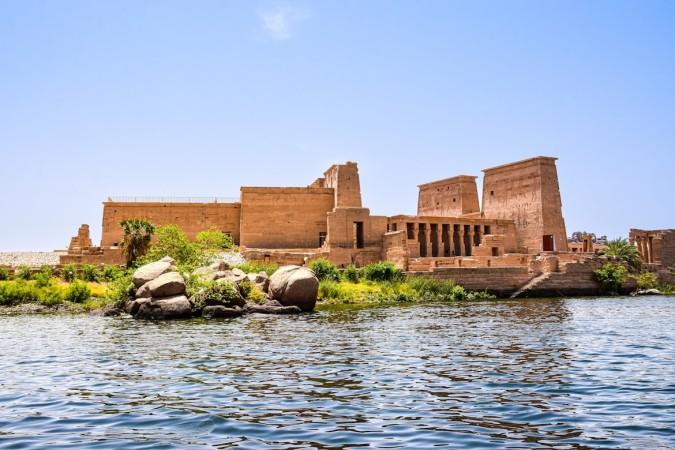
The Temple of Isis - © AXP Photography
Top Attractions in Aswan
Aswan is a treasure trove of historical and cultural landmarks, offering a blend of ancient wonders and natural beauty. Each of these attractions provides a unique glimpse into Aswan’s layered history and the profound influence of both ancient Egypt and Nubian culture on the region.
- Philae Temple: Located on Agilkia Island, Philae Temple is a breathtaking example of ancient Egyptian religious architecture. Originally built to honor the goddess Isis, the temple complex is made up of several smaller temples and shrines. It’s famous for its hieroglyphs and intricate carvings, which tell stories of ancient deities.
- Abu Simbel: These two massive rock-cut temples, carved directly into the mountainside, were constructed by Ramses II to commemorate his victory at the Battle of Kadesh and honor the gods. Twice a year, during the solar alignment phenomenon, the sun illuminates the inner sanctuary of the temple, lighting up statues of Ramses and the gods—a spectacle that attracts visitors from around the world.
- Aswan High Dam: Completed in 1970, the Aswan High Dam transformed Egypt’s economy by providing hydroelectric power and regulating the flooding of the Nile. The dam created Lake Nasser, one of the world’s largest artificial lakes, and allowed Egypt to reclaim large areas of desert for agriculture.
- Unfinished Obelisk: The Unfinished Obelisk, located in a historic quarry, is a one-of-a-kind monument that teaches visitors about ancient stone masons' techniques. Had it been completed, it would have stood at an incredible 42 meters (137 feet) and weighed over 1,200 tons, making it the largest obelisk in Egypt.
- Elephantine Island: This lush island in the middle of the Nile has been a key trading post for centuries. It is home to the Temple of Khnum, which honors the ram-headed god of the Nile's source. Visitors can explore the Aswan Museum on the island, which houses artifacts found during archaeological digs, or take a walk through the traditional Nubian village, where brightly painted houses line the riverbanks.

Philae Temple - © AXP Photography
Must-Try Dishes in Aswan
Aswan’s cuisine is a reflection of its Nubian and Egyptian heritage, offering a unique blend of flavors that are sure to delight food enthusiasts. From hearty stews to fresh Nile fish, the local dishes showcase a rich culinary tradition that highlights the region’s natural resources and cultural diversity.
- Fata: Fata, a popular Egyptian dish, is a tasty blend of rice, crunchy bread, and garlicky tomato sauce. It's often served with lamb or chicken and is traditionally eaten during celebrations, especially in Nubian households.
- Ful Medames: Ful Medames, a traditional Egyptian breakfast, consists of slow-cooked fava beans seasoned with olive oil, lemon, and garlic. In Aswan, it’s often accompanied by a variety of fresh vegetables and bread, making it a hearty start to the day.
- Kofta: Grilled meatballs made from a mix of lamb and beef, Kofta is flavored with spices such as cumin and coriander. In Aswan, these juicy skewers are often served with tahini sauce and flatbread.
- Dokka Fish: Aswan's proximity to the Nile means fresh fish is a local staple. Dokka fish, marinated and grilled with a special blend of herbs and spices, is a must-try dish for seafood lovers.
- Molokhia: A traditional dish made from jute leaves, Molokhia is served as a soup with rice or bread. In Aswan, it's flavored with garlic and coriander, creating a comforting, earthy taste that’s unique to the region.

Kofta - © The Spruce Eats
Festivals & Local Celebrations
Aswan is home to vibrant festivals and celebrations that showcase the city’s rich cultural heritage. These events provide a window into the local traditions and offer visitors a chance to experience the community’s joyful spirit firsthand.
- Sun Festival at Abu Simbel: This biannual event takes place on February 22nd and October 22nd, when the rising sun aligns perfectly to illuminate the inner sanctuary of the Abu Simbel Temple, lighting up the statues of Ramses II and the gods. Thousands of visitors gather to witness this ancient astronomical wonder and enjoy live music, traditional dances, and food.
- Nubian Cultural Festival: Celebrating the rich Nubian heritage of Aswan, this festival showcases traditional music, dance, art, and handicrafts. Visitors can immerse themselves in the vibrant culture by participating in workshops or simply enjoying the performances, making this a great opportunity to connect with the local community.
- Moulid of Sayyid al-Badawi: Aswan hosts the Moulid, or birthday celebration, of the revered Islamic saint, Sayyid al-Badawi. This religious festival is marked by lively street processions, Sufi chanting, and communal feasting, offering a unique glimpse into local spiritual traditions.
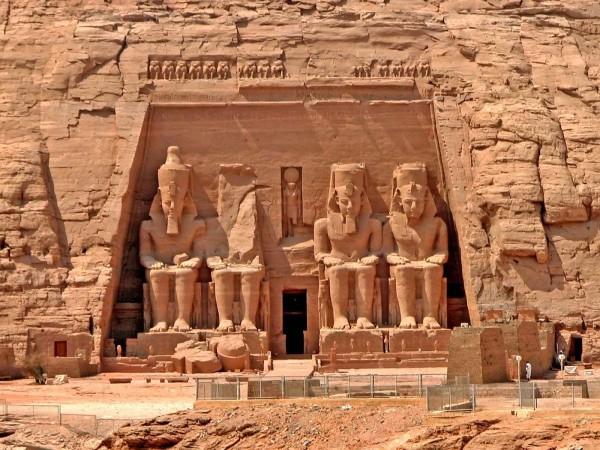
Sun Festival at Abu Simbel - © Britannica
What to Do in Aswan
- Felucca Sailing: A quintessential Aswan experience, sailing on a traditional felucca along the Nile is a peaceful and scenic way to explore the city’s surroundings. These boats glide gently across the water, offering stunning views of Elephantine Island, the Botanical Gardens, and the West Bank’s desert landscapes.
- Nubian Village Tours: Visit a traditional Nubian village to experience the vibrant culture and hospitality of the Nubian people. Here, you can explore colorful homes, enjoy local music and dances, and learn about the community’s customs and history.
- Temple Tours: No visit to Aswan is complete without exploring its iconic temples, including Philae, Abu Simbel, and the Temple of Kom Ombo.
- Camel Rides: For a more adventurous experience, take a camel ride through the desert, where you can visit ancient ruins or simply enjoy the stunning views of the Nile and its surrounding landscape.
- Aswan Botanical Garden Tours: Located on Kitchener’s Island, this lush garden is home to a wide variety of exotic plants and trees. It’s the perfect spot for a relaxing afternoon stroll.
Shopping in Aswan
- Aswan Souq: The Aswan Souq is a lively marketplace that runs along the city’s main street. Here, you’ll find a wide variety of goods, including handcrafted jewelry, spices, Nubian textiles, and local perfumes. The vibrant colors and fragrant smells of the souq make it an exciting place to explore.
- Nubian Handicraft Stores: Aswan is known for its Nubian crafts, including handwoven baskets, beaded jewelry, and pottery. These handmade items make for unique and meaningful souvenirs. Many shops in the Nubian villages sell directly from the artisans, allowing you to support the local community.
- Egyptian Cotton Stores: Renowned for its quality, Egyptian cotton is a popular purchase in Aswan. From scarves to clothing and bedding, cotton goods found in the souqs are both high-quality and affordable.
- Traditional Spice Stores: Aswan’s markets are filled with aromatic spices like cumin, coriander, and saffron. These spices make excellent gifts or personal mementos of your trip, offering a taste of Aswan to bring back home.
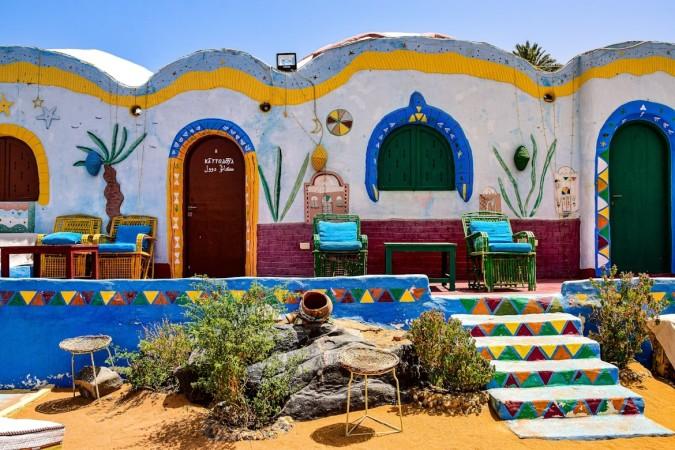
Visit Nubian Village - © AXP Photography
Weather in Aswan: Best Time for Visit
Aswan’s weather is dominated by a hot desert climate, offering nearly year-round sunshine. Each season brings unique tourism opportunities, and understanding the climate will help you plan the ideal time to visit.
Spring in Aswan
Spring is another ideal time to visit Aswan, with temperatures ranging from 25°C to 30°C (77°F to 86°F). It’s a favored time for travelers who want to avoid the winter crowds but still enjoy pleasant weather. This season is ideal for outdoor activities like visiting the Nubian Villages, hiking in the desert, and exploring nearby attractions like Abu Simbel.
Summer in Aswan
Summer in Aswan can be scorching, with daytime temperatures often exceeding 40°C (104°F). While it’s less common for tourists to visit during these months due to the intense heat, it’s an ideal time for budget travelers, as accommodation prices drop significantly, and popular attractions are less crowded. If you visit during this period, plan activities in the early morning or late afternoon to avoid the midday sun, and enjoy the relative tranquility of the city.
Autumn in Aswan
Autumn marks the beginning of Aswan’s peak tourism season, as temperatures start to cool, ranging between 25°C to 30°C (77°F to 86°F). This season is perfect for exploring the city’s outdoor attractions, such as Philae Temple and Elephantine Island, with pleasant weather that makes sightseeing enjoyable. Aswan’s beautiful Nile cruises also become highly popular during this period.
Winter in Aswan
Winter is the main travel season in Aswan, with daytime temperatures ranging from 20°C to 25°C (68°F to 77°F) and milder evenings. This is the best time for tourists to explore Aswan’s historical sites, take leisurely felucca rides along the Nile, and enjoy outdoor markets without the intense heat. Expect more crowds and higher accommodation rates, but also the most vibrant cultural scene.
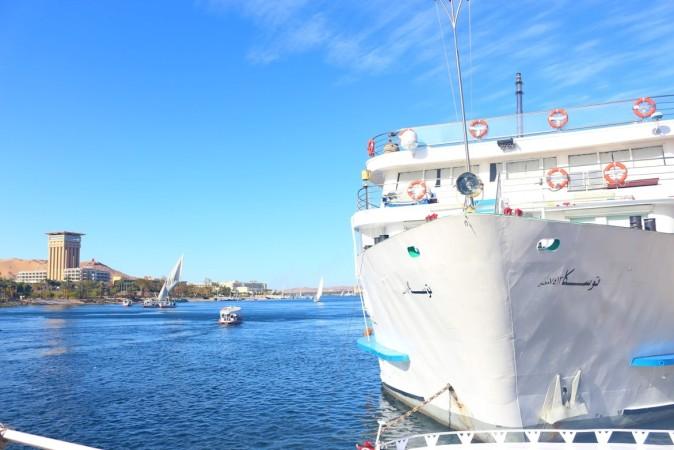
Setting sail at Aswan's coast - © Abdullah Helwa
Essential Travel Information
Getting Around Aswan
- Feluccas: The traditional felucca, a wooden sailboat, is not only a scenic way to travel but also a quintessential Aswan experience. Feluccas can be hired for short trips across the Nile or longer excursions to sites like Elephantine Island or the Nubian Villages.
- Taxis: Taxis are widely available in Aswan, and most drivers are familiar with the popular tourist destinations. It’s advisable to agree on a fare before starting your journey, as meters are rarely used. Some taxi drivers may speak basic English, but it’s useful to have your destination written down in Arabic.
- Local Buses and Minibuses: For a more budget-friendly option, local buses and minibuses are available for travel around the city. While these may be less comfortable than taxis, they provide a more authentic glimpse into daily life in Aswan.
- Horse-drawn Carriages: Known as caleches, these horse-drawn carriages offer a charming way to tour Aswan’s Corniche. This leisurely mode of transport is perfect for short trips and provides a nostalgic feel of ancient times.
- Boat Taxis: To cross the Nile, boat taxis are available at many points along the river. These small motorboats are a quick and scenic way to get to islands or the west bank.
ATM & Banking Services
Aswan offers convenient access to ATMs and modern banking services throughout the city, particularly in tourist areas, major hotels, and the Corniche. International debit and credit cards are generally accepted at most ATMs, and many machines offer instructions in English. Currency exchange services are also available at banks, exchange bureaus, and large hotels. While credit cards are accepted in many tourist-centric locations, it’s advisable to carry cash for smaller purchases at local markets or for tipping.
Where to Stay in Aswan
- Luxury Hotels: For those seeking an indulgent experience, Aswan boasts several high-end hotels along the Nile, offering stunning river views, lavish amenities, and a blend of modern comforts with historical charm. These hotels often feature luxurious pools, spa services, and fine dining, providing an upscale stay for discerning travelers.
- Mid-Range Hotels: Aswan’s mid-range accommodations offer a balance of comfort and affordability. These hotels typically provide comfortable rooms, good service, and essential amenities like pools and restaurants, making them ideal for families, couples, or solo travelers looking for convenience without the high price tag.
- Budget Guesthouses: For budget-conscious travelers, Aswan has a variety of cozy guesthouses that provide a more intimate, local experience. These smaller establishments often feature simple rooms, friendly hosts, and an opportunity to connect with other travelers. They are perfect for those who prefer an authentic and affordable stay.
- Nubian Villages: For a truly immersive experience, staying in a traditional Nubian village offers a unique opportunity to enjoy the hospitality of the local community. These accommodations often combine cultural authenticity with basic comforts, providing a peaceful retreat and a chance to learn more about Nubian culture.
Articles for you

Explore Yala National Park - Sri Lanka Travel, Asia
Tucked away in Sri Lanka’s southeastern corner, Yala National Park is where wild nature meets deep tradition. Known worldwide for its leopard population, the park is also home to elephants, sloth bears, crocodiles, and hundreds of bird species. Beyond wildlife, Yala opens doors to a cultural landscape dotted with ancient temples, Buddhist ruins, and coastal villages. For travelers seeking more than just a safari, Yala offers a chance to explore eco-tourism, local communities, and sacred heritage sites.
Population: The Yala National Park area doesn’t have a human population.
Economy: The economy around Yala National Park thrives on a blend of eco-tourism, agriculture, and local services. Safari tours, eco-lodges, and cultural experiences drive steady income for nearby towns like Tissamaharama and Kataragama, supporting thousands of families.
Landmarks: Famous for Block I of Yala and wildlife encounters, including elephants, sloth bears, crocodiles, and exotic bird species.

Explore Galle - Sri Lanka Travel, Asia
Nestled on Sri Lanka’s southern coastline, Galle is a vibrant city where history meets the sea. Its cobbled streets, colonial architecture, and serene beaches make it a must-visit destination for travelers seeking a blend of culture, adventure, and relaxation. A UNESCO World Heritage site, Galle captivates visitors with its Dutch Fort, bustling markets, and friendly locals. Whether you’re exploring the ramparts at sunset or savoring fresh seafood by the shore, Galle promises an unforgettable journey into Sri Lanka’s heritage.
Population: Approximately 113,000 in 2023.
Economy: Galle’s economy thrives on tourism, trade, and fisheries. The city’s historic fort, colonial architecture, and coastal charm draw thousands of international visitors each year, making tourism its main economic driver. Fishing remains vital for local livelihoods, supplying fresh seafood across the region.
Landmarks: Famous for the Galle Fort, Dutch Reformed Church & Maritime Museum, and Unawatuna Beach.

Explore Bentota - Sri Lanka Travel, Asia
Nestled along Sri Lanka’s southwestern coast, Bentota is a tropical paradise that blends golden beaches, vibrant culture, and thrilling adventures. Famous for its calm waters, luxury resorts, and scenic river estuary, Bentota has become a top destination for travelers seeking both relaxation and authentic experiences. From serene beach walks at sunrise to adrenaline-pumping water sports, this coastal town offers a perfect balance of leisure and exploration. With its proximity to Colombo and Galle, Bentota is easy to reach, making it an ideal stop for both short escapes and extended holidays.
Population: Approximately 37,000 in 2023.
Economy: Bentota’s economy thrives mainly on tourism, which drives local businesses such as hotels, restaurants, and wellness retreats. The town also benefits from fishing, coconut cultivation, and handicrafts like wood carving and batik textiles. Many residents rely on the growing demand for water sports and Ayurvedic treatments, making tourism the backbone of both income and employment in the area.
Landmarks: Famous for Bentota Beach, Bentota River Safari, and Kande Vihara Temple.

Explore Mirissa - Sri Lanka Travel, Asia
Mirissa is a charming coastal town on Sri Lanka’s southern shoreline. Known for its golden beaches, turquoise waters, and vibrant marine life, it has become a must-visit stop for travelers exploring the island. Many come for whale watching, surfing, and sunset views at Coconut Tree Hill, but Mirissa offers much more than postcard beauty. The fishing boats you see anchored by the bay carry generations of stories. Local traditions, delicious cuisine, and a laid-back rhythm of life shape every visitor’s experience.
Population: Approximately 4,700 in 2023.
Economy: Mirissa’s economy is largely shaped by its coastal location. Fishing has long been the backbone of local livelihoods, with generations relying on the Indian Ocean for income. In recent decades, tourism has become the main driver of growth, thanks to whale watching, surfing, and beachside hospitality.
Landmarks: Famous for Mirissa Beach, Coconut Tree Hill, and Parrot Rock Bridge.

Explore Nuwara Eliya - Sri Lanka Travel, Asia
Tucked away in the Central Highlands of Sri Lanka, Nuwara Eliya is often called “Little England”. With its rolling tea plantations, cool misty mornings, and colonial charm, this mountain town feels like a step into another world. Travelers come here to breathe fresh air, walk through flower gardens, sip the finest Ceylon Tea, and enjoy a pace of life far from the island’s busy cities. Whether you’re drawn by scenic landscapes, heritage architecture, or the warmth of its people, Nuwara Eliya is a destination that blends nature, culture, and history in perfect harmony.
Population: Approximately 781,000 in 2023.
Economy: Nuwara Eliya’s economy thrives mainly on tea production, as it sits in the heart of Sri Lanka’s central highlands, famous worldwide for Ceylon Tea. The city also benefits from a growing tourism industry, attracting visitors with its colonial charm, cool climate, and scenic landscapes.
Landmarks: Famous for Gregory Lake, Hakgala Botanical Garden, and Victoria Park.

Explore Sukau - Malaysia Travel, Asia
Nestled on the banks of the Kinabatangan River in Sabah, Malaysian Borneo, Sukau is a destination where wildlife, culture, and conservation come together. Known as one of Asia’s top spots for river safaris and eco-tourism, this quiet village offers a front-row seat to encounters with Bornean orangutans, pygmy elephants, proboscis monkeys, and exotic birdlife.
Population: Approximately 1,400 in 2019.
Economy: Sukau’s economy is shaped by its riverine location and natural resources. Traditionally, the Orang Sungai community relied on fishing, small-scale farming, and forest gathering for their livelihood. Today, the village has shifted toward eco-tourism, with river cruises, jungle trekking, and homestays providing income.
Landmarks: Famous for the Kinabatangan River cruises, Gomantong Caves, and Ox-bow lakes and wetlands.
